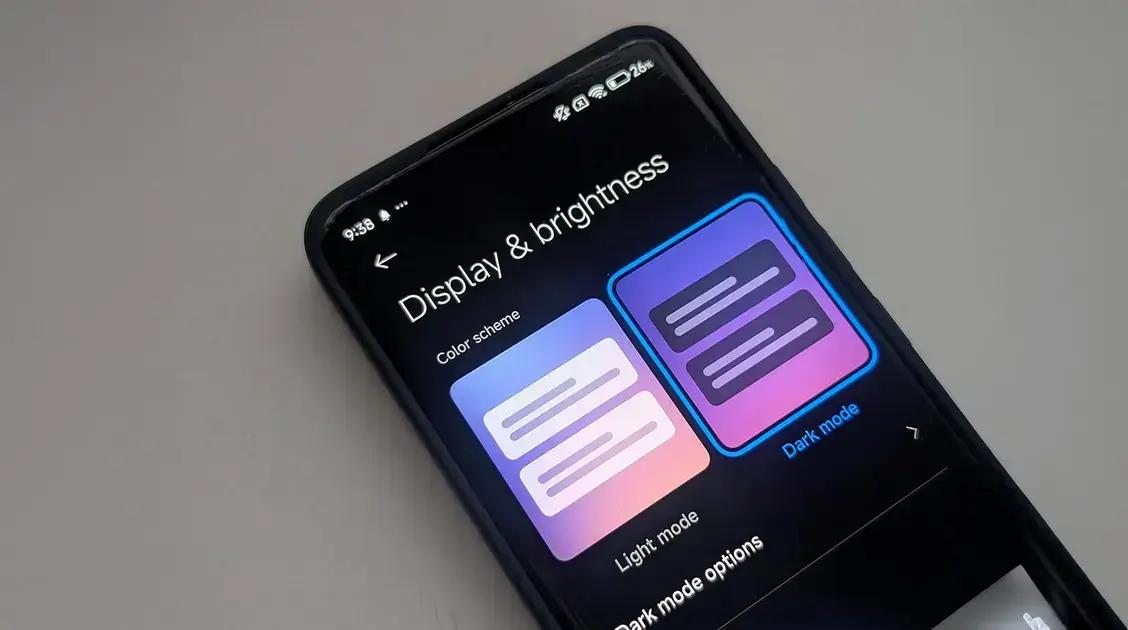Xiaomi’s HyperOS boasts a refined Dark Mode, promising significant battery savings, especially for devices with OLED or AMOLED screens. This article explores how HyperOS Dark Mode achieves these power efficiencies and quantifies the potential battery life extension. We’ll delve into the mechanics behind these savings and consider real-world usage scenarios.
HyperOS Dark Mode: Unveiling Battery Savings on Xiaomi Devices
Dark Mode, a popular feature in many operating systems, swaps bright backgrounds for darker hues. This not only reduces eye strain in low light but also improves battery life, particularly on OLED and AMOLED displays like those found in newer Samsung devices. Unlike LCDs, which have a constant backlight, these screens illuminate individual pixels. Black pixels remain off, requiring no power.
HyperOS optimizes Dark Mode beyond MIUI 14’s capabilities. It uses deeper blacks and minimizes light color emissions. This strategy conserves energy, as each pixel’s power draw correlates with its brightness. Battery performance is a key consideration for manufacturers like OnePlus as well. This pixel-level power management is at the heart of HyperOS Dark Mode’s battery savings.
OLED and AMOLED Displays: Maximizing Battery Savings
The power-saving advantage of HyperOS Dark Mode truly shines on OLED and AMOLED screens. Black pixels essentially switch off, unlike LCDs with their always-on backlight. This fundamental difference allows for noticeable battery savings. QLED technology, as seen in Sharp’s latest smart TVs, also focuses on enhancing display quality and efficiency.
Dark Pixel Efficiency and Practical Savings
Fewer pixels illuminate when displaying dark colors on OLED panels, directly reducing power usage. HyperOS employs true black (#000000) in various UI elements, maximizing this effect. Reported battery savings with HyperOS Dark Mode range from 15% to 30% on OLED Xiaomi devices, depending on usage. This can add an extra hour or two between charges. Similar efforts to extend battery life are seen in new audio devices, such as Audio-Technica’s headphones boasting 65 hours of playback.
LCD Displays and Battery Life
On Xiaomi devices with LCD screens, battery life improvements from HyperOS Dark Mode are less dramatic. The backlight remains on regardless of the displayed color. However, HyperOS incorporates software optimizations to provide modest power savings even on these devices. The impact of Dark Mode on battery savings is therefore tied to the display technology.
Real-World Battery Savings with HyperOS Dark Mode
Quantifying Battery Life Extension
Let’s explore a few scenarios to illustrate how HyperOS Dark Mode affects battery life. For power users engaged in media consumption, gaming, or primarily light-themed apps, OLED screens can see up to 30% more battery life. Regular users with apps that support dark mode might experience 10-20% longer battery life. Even light users who mainly call, text, and browse can see 5-15% improvement, especially with an OLED screen.
Practical Examples of Battery Savings
Reports suggest HyperOS Dark Mode yields substantial battery savings, from 15% to 30% under heavy use on OLED screens. LCD users can anticipate around 5-10% improvement. These savings result from both reduced pixel illumination and the tendency to use lower brightness settings in dark mode. Activating HyperOS Dark Mode offers a simple way to maximize battery life. It’s a convenient tool for stretching those final moments of battery power, whether for work or leisure. Extended battery life becomes particularly crucial during gaming sessions or when using power-hungry apps.
Via XiaomiTime


